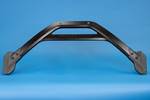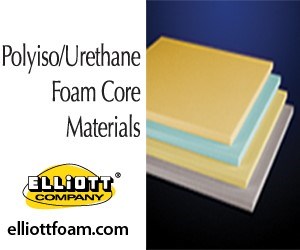Röchling and partners iterate thermoplastic composite convertible roof beam
Röchling Automotive, Mercedes-Benz, Envalior and Valmet replaced traditional magnesium with composites, achieving a more seamless, lightweight structural design that opens opportunities for other vehicle applications.
Röchling Automotive (Mannheim, Germany), along with Germany-based consortium partners Mercedes-Benz, Bond Laminates by Envalior and Valmet, have developed a thermoplastic composite rooftop beam for the Mercedes-Benz CLE Cabrio convertible that is less weight than traditional designs and enhances the vehicle’s interior aesthetics. Röchling developed and manufactures the beam and Envalior co-led CAE simulation.
Rooftop beams ensure a secure connection where the convertible roof meets the vehicle. When the soft top is closed, the element rests on the front of the windshield and closes off the side windows. Whereas the traditional technical solution is usually made of magnesium, this novel roof beam relies on a glass fiber-reinforced polyamide 6 (PA6) and organosheet fabricated using Röchling’s hybrid molding process — thermoforming and injection molding in a single step. The manufacturing process has eliminated the traditional visible plastic trim, achieving an uninterrupted aesthetic, while reducing component weight by 700 grams and cutting part count by 50%.
In addition to lightweighting, design flexibility was a key objective of this project. The design freedom of the composite base now enables an entirely new approach to component design according to partners, allowing it to withstand high mechanical loads through continuous fiber reinforcement.
Passengers can enjoy a markedly enhanced interior design, with a seamless transition between the windshield frame and headliner materials. Moreover, environmental impact is reduced, since both molding material and the organosheet are made from the same recyclable material.
The thermoplastic composite roof beam is a proof of concept for other lightweight vehicle applications. It was considered a 2025 JEC Composites Innovation Awards finalist.
This post is courtesy of the CompositesWorld and AZL Aachen GmbH media partnership.
Related Content
-
Co-molding SMC with braided glass fiber demonstrates truck bed potential
Prepreg co-molding compound by IDI Composites International and A&P Technology enables new geometries and levels of strength and resiliency for automotive, mobility.
-
Composite bipolar plates provide 81% improvement to hydrogen fuel cell power density
Ultra-thin CFRTP plates developed by Hycco achieve a 7.5 kilowatt/kilogram power density, high durability for fuel cells in long-flight drone and heavy-mobility applications.
-
Hybrid process marries continuous, discontinuous composites design
9T Labs and Purdue applied Additive Fusion Technology to engineer a performance- and cost-competitive aircraft bin pin bracket made from compression-molded continuous and discontinuous CFRTP.

















